The AMD Ryzen 5 1600X vs Core i5 Review: Twelve Threads vs Four at $250
by Ian Cutress on April 11, 2017 9:00 AM ESTGPU Tests: Civilization 6 (1080p, 4K)
First up in our CPU gaming tests is Civilization 6. Originally penned by Sid Meier and his team, the Civ series of turn-based strategy games are a cult classic, and many an excuse for an all-nighter trying to get Gandhi to declare war on you due to an integer overflow. Truth be told I never actually played the first version, but every edition from the second to the sixth, including the fifth as voiced by the late Leonard Nimoy, it a game that is easy to pick up, but hard to master.
Benchmarking Civilization has always been somewhat of an oxymoron – for a turn based strategy game, the frame rate is not necessarily the important thing here and even in the right mood, something as low as 5 frames per second can be enough. With Civilization 6 however, Firaxis went hardcore on visual fidelity, trying to pull you into the game. As a result, Civilization can taxing on graphics and CPUs as we crank up the details, especially in DirectX 12.
Perhaps a more poignant benchmark would be during the late game, when in the older versions of Civilization it could take 20 minutes to cycle around the AI players before the human regained control. The new version of Civilization has an integrated ‘AI Benchmark’, although it is not currently part of our benchmark portfolio yet, due to technical reasons which we are trying to solve. Instead, we run the graphics test, which provides an example of a mid-game setup at our settings.
At both 1920x1080 and 4K resolutions, we run the same settings. Civilization 6 has sliders for MSAA, Performance Impact and Memory Impact. The latter two refer to detail and texture size respectively, and are rated between 0 (lowest) to 5 (extreme). We run our Civ6 benchmark in position four for performance (ultra) and 0 on memory, with MSAA set to 2x.
For reviews where we include 8K and 16K benchmarks (Civ6 allows us to benchmark extreme resolutions on any monitor) on our GTX 1080, we run the 8K tests similar to the 4K tests, but the 16K tests are set to the lowest option for Performance.
MSI GTX 1080 at 1920x1080

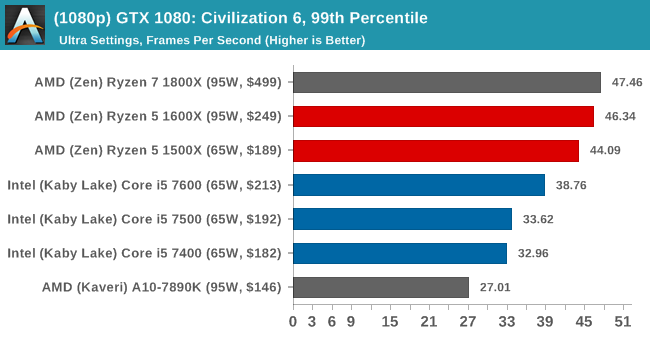
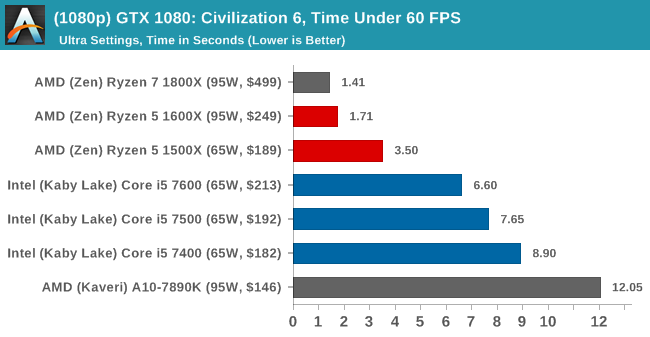
MSI GTX 1080 at 4K
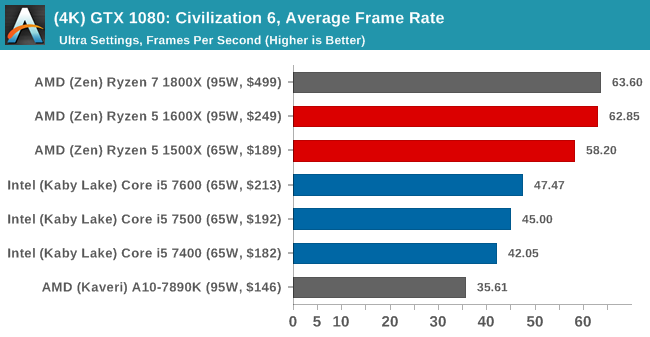
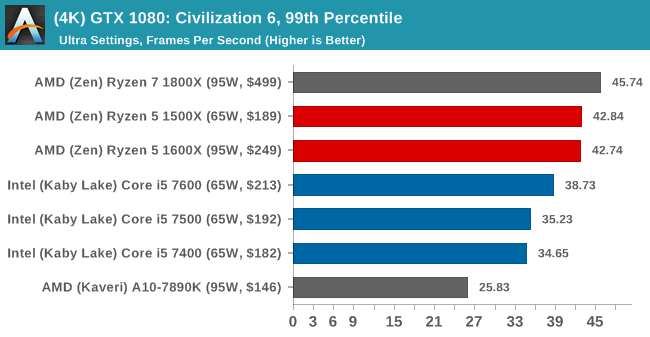 >
>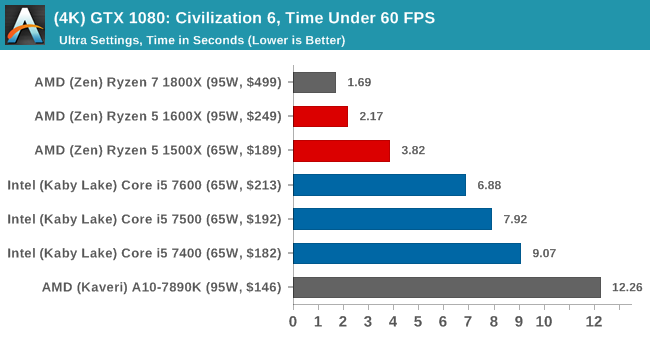
ASUS GTX 1060 at 1920x1080
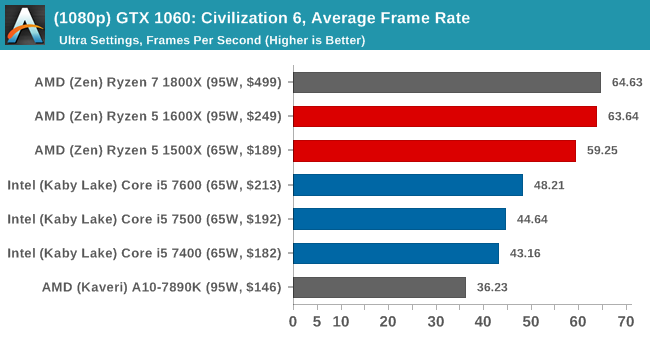
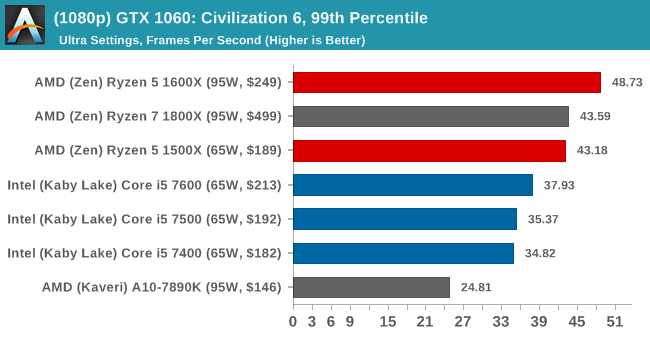

ASUS GTX 1060 at 4K

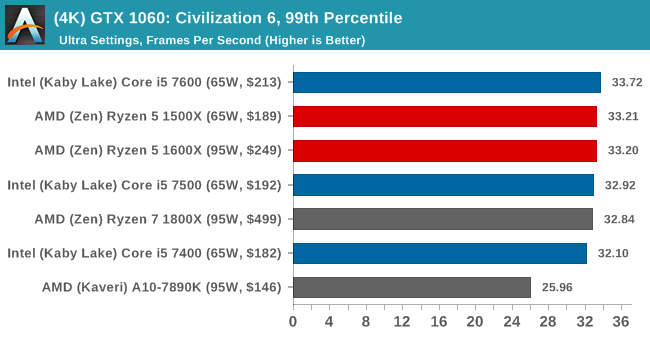
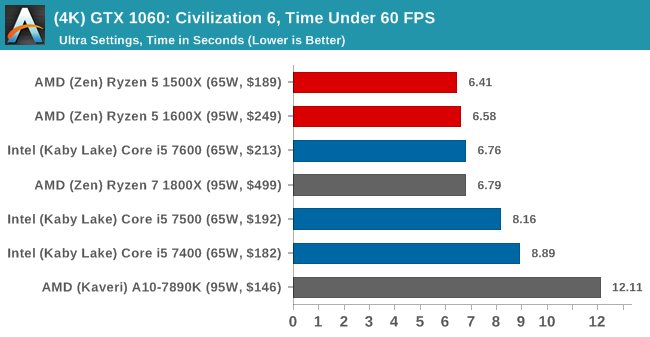
Sapphire R9 Fury at 1920x1080
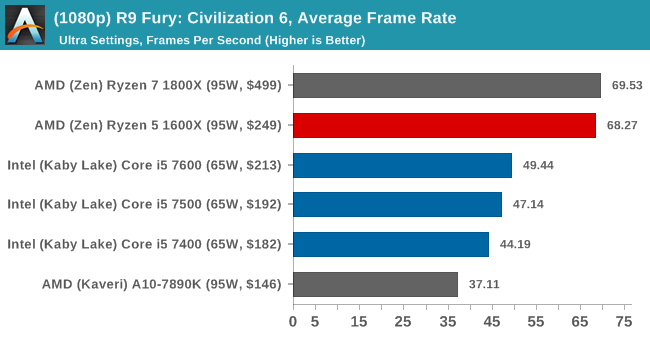
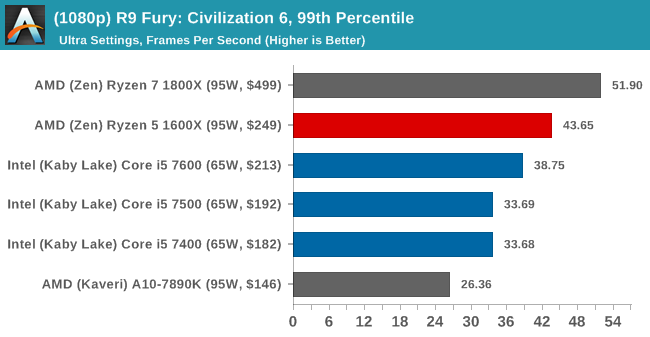

Sapphire R9 Fury at 4K
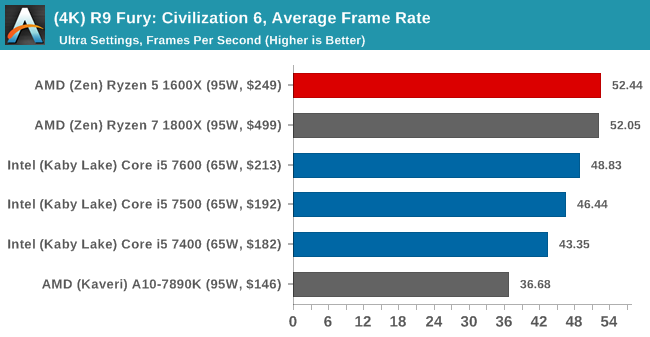
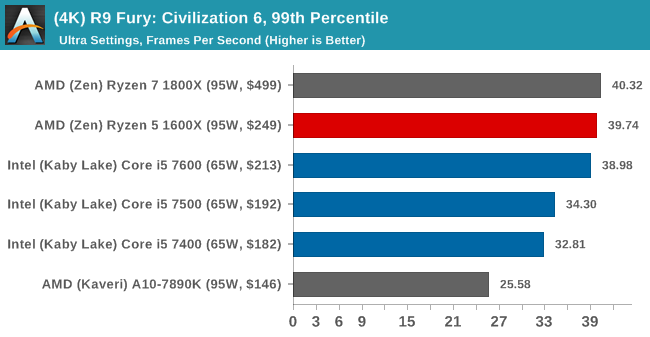
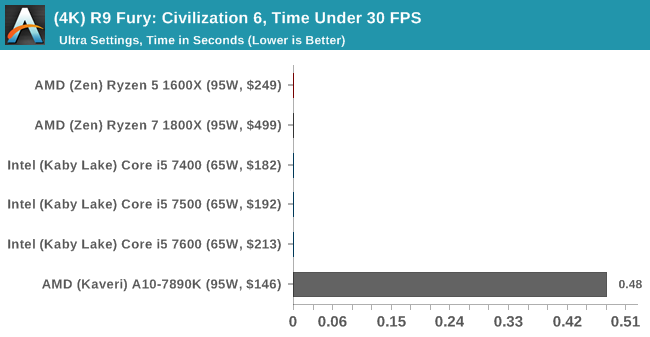
Sapphire RX 480 at 1920x1080
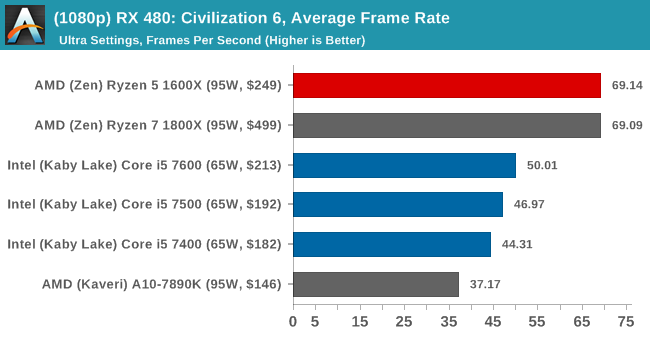
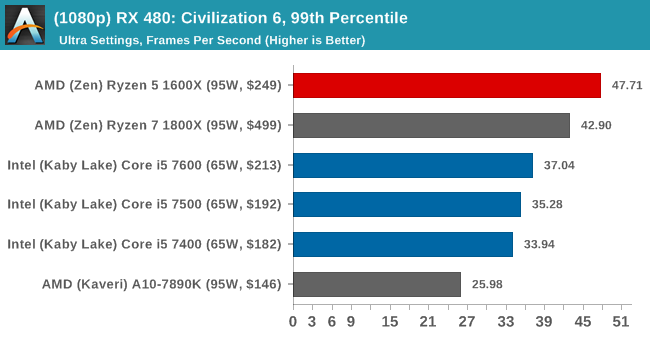
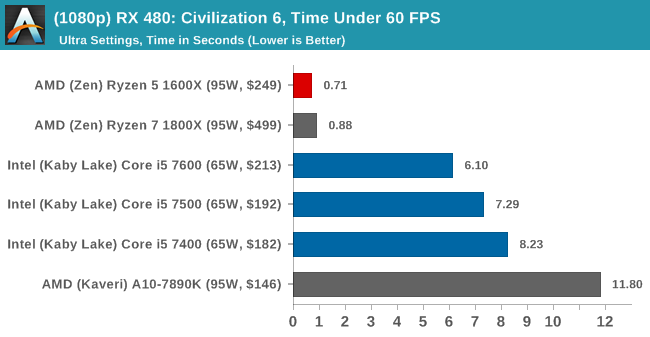
Sapphire RX 480 at 4K
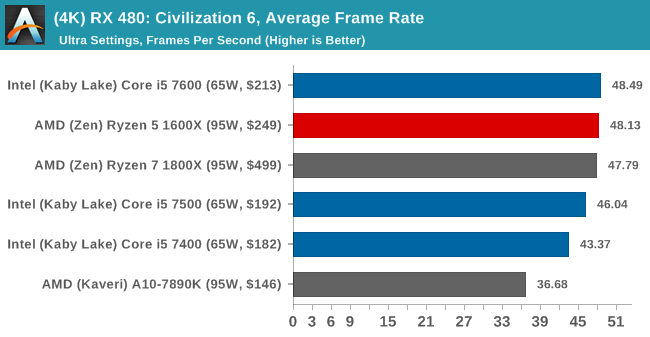
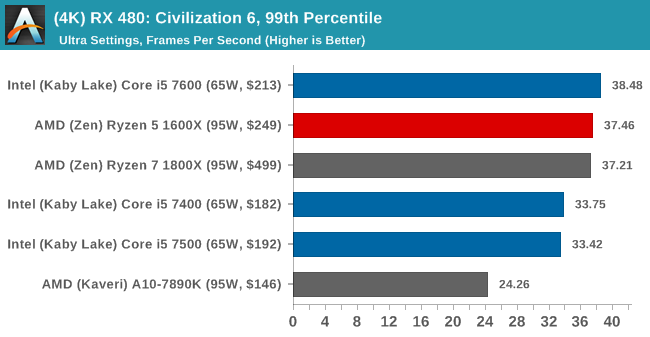
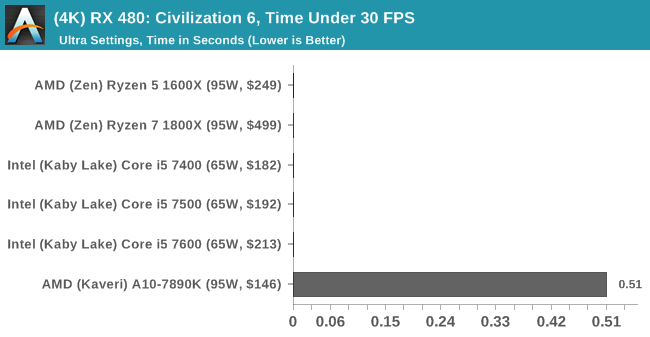


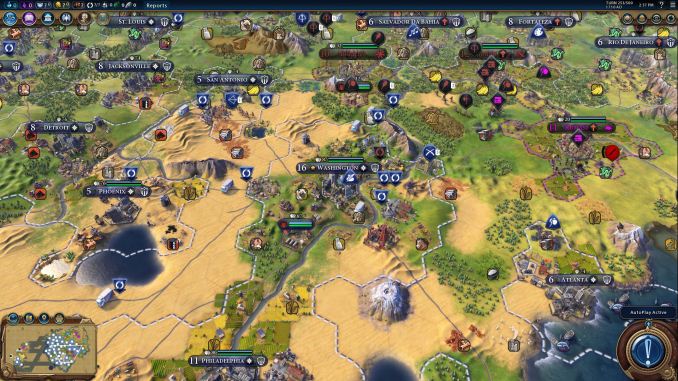
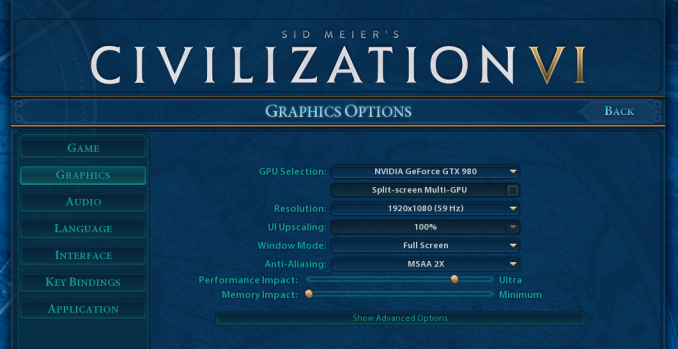








254 Comments
View All Comments
msroadkill612 - Thursday, May 4, 2017 - link
I still dont get what the deal w/ am4 mobos and a pair of m.2 pcie3 nand ssdS in raid 0 is?the x370 (but not the x350) chipset seems to allow an extra 4x pcie3 lanes, directly linked to the cpu (not shared lanes via the chipset), for one or 2 x onboard m.2 sockets.
But its never made clear, to me anyway, that if u use 2 m.2 drives, does each get 2 lanes of pcie3, and therefore are perfectly matched, as desired by raid0.
Surely its not just me that finds a 4GBps storage resource exciting?
(e.g. see storage in specs on link re m.2)
https://www.msi.com/Motherboard/X370-XPOWER-GAMING...
https://www.msi.com/Motherboard/X370-XPOWER-GAMING...
I suspect it translates to 2 x 2 lane pcie3 lanes - 2GBps for each m.2 nvme ssd socket, which surreally, is less than samsung nvme ssdS e.gS maxed out ability of 2.5GB+ ea.
Drives are now too fast for the interface :)
A pair of nand nvme ssds could individually max out each of the 2, 2 pci3 lane sockets (2 GB each), for a total of up to 4GBps read AND WRITE (normally write is much slower than read on single drives). Thats just insane storage speed vs historical norms - a true propeller head would kill for that.
I also hear ssdS are so reliable now, that the risks of raid 0 are considerably diminished.
IMO, a big question prospective ~server & workstation ryzen users should be asking, is if they can manage w/ 8 lanes of pcie3 for their gpu - which seems entirely possible?
"Video cards do benefit from faster slots, but only a little. Unless you are swapping huge textures all the time, even 4x is quite close to 16x because the whole point of 8GB VRAM is to avoid using the PCIe at all costs. Plus many new games will pre-load textures in an intelligent manner and hide the latency. So, running two 8x SLI/CF is almost identical to two 16x cards. The M.2 drives are much faster in disk-intensive workloads, but the differences in consumer workloads (load an application, a game level) are often minimal. You really need to understand the kind of work you are doing. If you are loading and processing huge video streams, for example, then M.2 is worth it. NVMe RAID0 is even more extreme. Will the CPU keep up? Are you reaching a point of diminishing returns? And if you do need such power, you should consider a separate controller to offload the checksuming and related overhead, otherwise you will need 1 core just to keep up with the RAID array."
(interesting last line - w/ 8 cores the new black, who cares?)
This would free up 8x pcie3 lanes for a high end add in card if a big end of town app requires it.
So yeah, re a raid 0 using 2 m.2 slots onboard a suitable 2xm.2 slot am4 mobo, do I get what i need for proper raid0?
i.e.
each slot is 2GBps, so my raid pair is evenly matched, and the pair theoretically capable of 4GBps b4 bandwidth is saturated?
msroadkill612 - Thursday, May 4, 2017 - link
PS re my prev postspecifically from the link
"• AMD® X370 Chipset
....
• 2 x M.2 ports (Key M)
- M2_1 slot supports PCIe 3.0 x4 (RYZEN series processor) or PCIe 3.0 x2 (7th Gen A-series/ Athlon™ processors) and SATA 6Gb/s 2242/ 2260 /2280/ 22110 storage devices
- M2_2 slot supports PCIe 2.0 x4 and SATA 6Gb/s 2242/ 2260 /2280 storage devices
• 1 x U.2 port
- Supports PCIe 3.0 x4 (RYZEN series processor) or PCIe 3.0 x2 (7th Gen A-series/ Athlon™ processors) NVMe storage
* Maximum support 2x M.2 PCIe SSDs + 6x SATA HDDs or 2x M.2 SATA SSDs + 4x SATA HDDs."
it sure seems to be saying the 2nd m.2 poet would be a pcie2 port, and the first m.2 port uses the whole 4 pcie3 lanes linked to the cpu.
thats sad if so - it means no matched pair for raid 0 onboard. only a separate controller would do.
i cannot see why? why cant the 4 pcie3 lanes be shared evenly?
asuchemist - Wednesday, May 17, 2017 - link
Every review I read has different results but same conclusion.rogerdpack - Tuesday, March 27, 2018 - link
"hard to notice" -> "hard not to notice" I think...